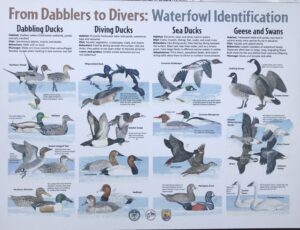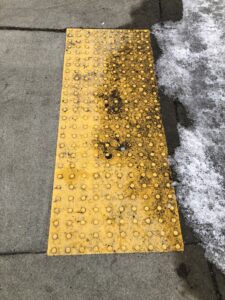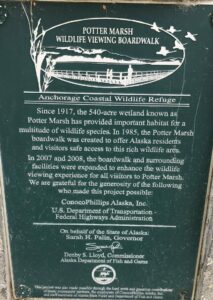 Today’s adventure took us out to the Potter Marsh Wildlife Viewing Boardwalk to witness the most incredible landscape and immerse ourselves in natural beauty. Interestingly, the marsh is a result of human intervention in the Alaskan landscape. The construction of the Alaska Railroad required an embankment, cutting off smaller creeks and the marsh was born. The boardwalk, a small part of the Anchorage Coastal Wildlife Refuge, provides safe public access to this thriving habitat.
Today’s adventure took us out to the Potter Marsh Wildlife Viewing Boardwalk to witness the most incredible landscape and immerse ourselves in natural beauty. Interestingly, the marsh is a result of human intervention in the Alaskan landscape. The construction of the Alaska Railroad required an embankment, cutting off smaller creeks and the marsh was born. The boardwalk, a small part of the Anchorage Coastal Wildlife Refuge, provides safe public access to this thriving habitat.
Wildlife make the marsh their home; using it for food, shelter, and a place to raise their babies. Human visitors use the marsh to safely observe wildlife, for exercise, and a connection to nature. We can also use the marsh as an educational tool. The natural world, especially here in Alaska, is an invaluable resource to teach across curricular areas at every grade level. Literature, science, art, and history are disciplines that can be supported by real-life examples in the natural world. This visit to the Potter Marsh challenged us to look at this resource as a teaching tool for mathematics.
 |
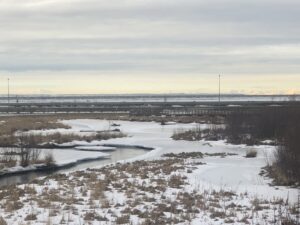 |
Looking outside the classroom provides students an opportunity to see the learning they are doing in action. Real-world examples allow educators to help students answer the larger Essential Questions of why math matters and its presence in our everyday lives. Pulling the outside world into the classroom can take on many forms; intensive units of study or just a series of “warm-up” exercises that integrate the Iditarod and Alaska into daily instruction. Starting small allows for correction, or extension. Below you’ll find examples of a math question that you can ask your students as a warm-up, as part of a larger lesson, or as the math component of an interdisciplinary study. The Potter Marsh Wildlife Boardwalk provided endless possibilities for instruction and endless vistas of the mountains, both beautiful things.
Kindergarten:
- Expectation: sort and classify objects according to their attributes and organize data about the objects
- Waterfowl Wonderings: Migrating Birds make their home in Potter Marsh where they can survive on plentiful food and raise their families during the long summer days. Look at the chart of water birds that live in the Marsh.
- Counting: How many groups do you see? How many birds do you see? Which group has the most? Least? Equal?
- Wondering: Why are the birds in four groups? What is an attribute?
- Question: How could we sort the birds differently? Color? Size? Male/Female? Practice sorting using a new attribute.
3rd Grade:
- Expectation: Develop fluency with basic number combinations for multiplication and division (and use these combinations to mentally compute problems)
- Accessibility Awareness: The Potter Marsh Boardwalk is an accessible walkway that allows for persons of differing mobility to visit natural areas that might otherwise be prohibitive due to variable trail surfaces. View the tactile paving photograph from the entrance to the Potter Marsh Boardwalk. Tactile paving is used to help visually impaired visitors navigate uneven or dangerous areas.
- Multiplication: The paver has raised dots which will alert a person who is visually-impaired to a surface change or imminent danger. The paver is 10 dots across.
- Question: How many dots are on the paver? Solve using a multiplication by 10s. You may count the dots up the side of the paver, but may not count ALL the dots. Show your work and how you came to your answer.
- Extension: What would happen if the paver was thinner? Shorter? How many rows would it have if the paver had half the number of dots? Draw how this would look. What impact do you think this would have on accessibility and why?
5th Grade:
- Expectation: recognize and generate equivalent forms of commonly used fractions, decimals, and percentages
- Mammal Move-In: Potter Marsh is the perfect habitat for a large variety of birds and animals. Beavers, Muskrats, Otters, and Mink take to the water to live and raise their young.
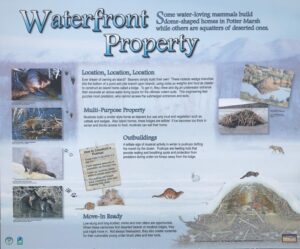 These fascinating water mammals live in homes they make, and homes they “borrow’.
These fascinating water mammals live in homes they make, and homes they “borrow’. - Fact Finding: Read the panel pictured and learn more about the water mammals that live in the marsh.
- Question: How many mammals are mentioned? Using fractions calculate the number of animals that make their own home. Using percentages calculate the animals that create a “push-up”. What percent of animals move-in to abandoned homes?
- Extension: Research (or use the images below) to create a list of animals that live in Potter Marsh to add to the complexity of the calculations. Determine fraction, decimal, and/or percentage calculations for varied criteria; mammals, birds, fish.
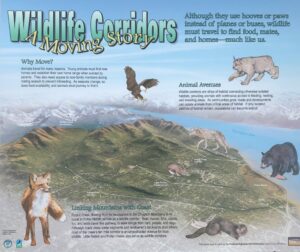 |
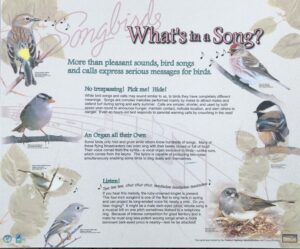 |
 |
7th Grade:
- Expectation: understand relationships among units and convert from one unit to another within the same system
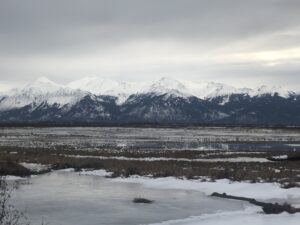 Refuge Reach: Potter Marsh is part of the Anchorage Coastal Wildlife Refuge, a protected area established in 1971 that runs 16 miles along the coast from Point Woronzof to Potter Marsh. The area includes coastal marshes and intertidal mudflats; important habit for a variety of animals.
Refuge Reach: Potter Marsh is part of the Anchorage Coastal Wildlife Refuge, a protected area established in 1971 that runs 16 miles along the coast from Point Woronzof to Potter Marsh. The area includes coastal marshes and intertidal mudflats; important habit for a variety of animals. - Examine: Look at the map below of the Anchorage Coastal Wildlife Refuge. The line along the coast is 16 miles long. The total area of the refuge is 32,500 acres.

- Question: How can we convert the miles and acres into similar forms of measurement? Using the information below can you determine how many square miles are in 32,500 acres?
- 1 acre = .0015 square mile
- Can you determine how many feet are in 16 miles of coastline?
- 1 mile = 5280 feet
- Extension: Which is more: the number of acres in the Refuge or the number of feet between Potter Marsh and Point Woronzof?
9th Grade:
- Expectation: use geometric ideas to solve problems in, and gain insights into, other disciplines and other areas of interest such as art and architecture
- Pavilion Pondering: The welcome pavilion at Potter Marsh provides shelter from the elements and informational displays to orient visitors to the boardwalk. Access to natural areas is an important component of helping visitors enjoy and respect the environment. Look closely at the three photos of different views of the pavilion.
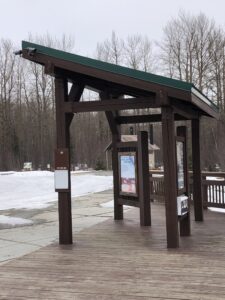 |
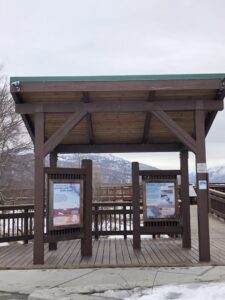 |
 |
- Identify: Find the triangles on each side of the pavilion roof and the two triangles on the front of the pavilion roof.
- Wondering: Are the triangles on the front and sides the same or different? How does this specific shape support the roof?
- Question: Using your knowledge of triangles compare the triangles in the photos and explain how they are similar or different from each other by focusing on angles and side-length. State the names of the types of triangles in the images and what evidence supports this answer.
- Extension: What would happen if you increased or decreased certain angles? How would the structure change? What problems might arise from changing the triangles?



